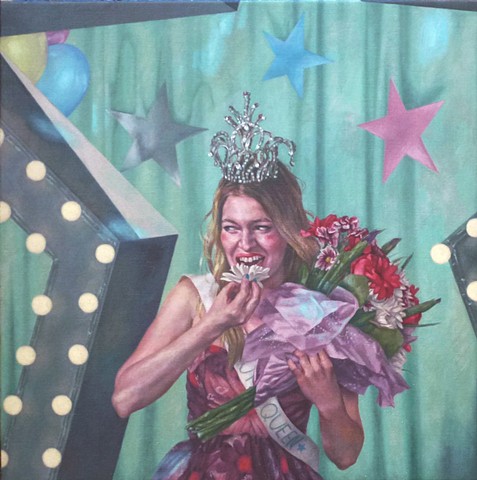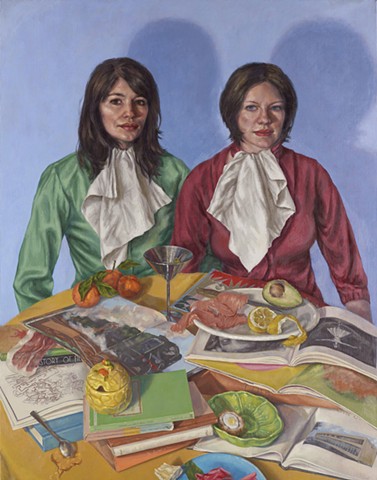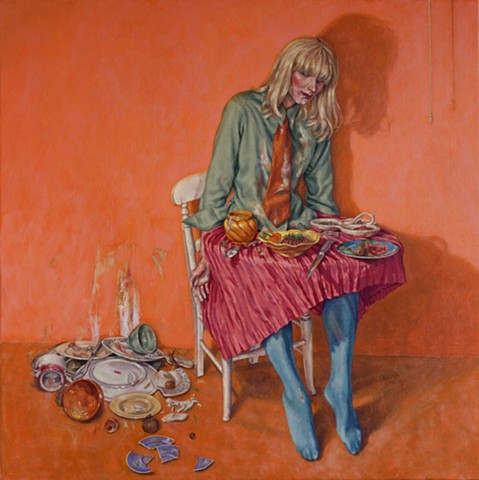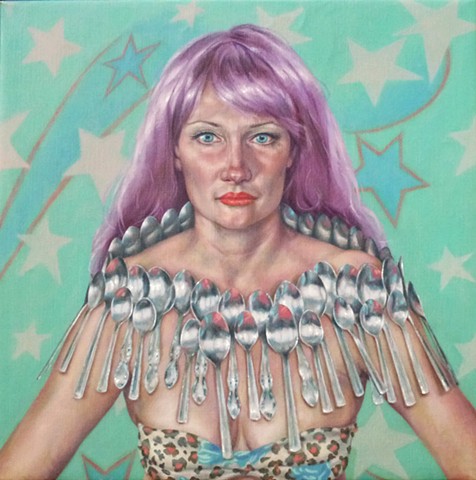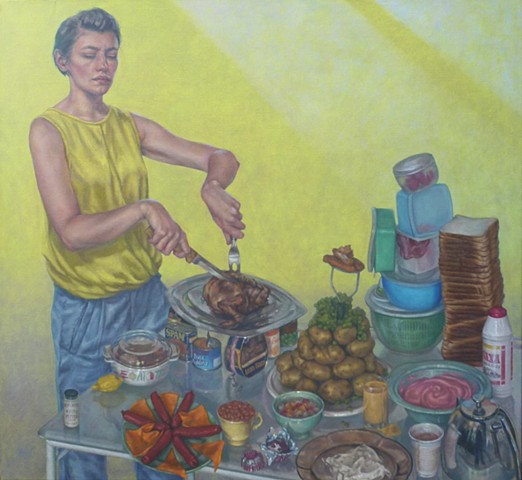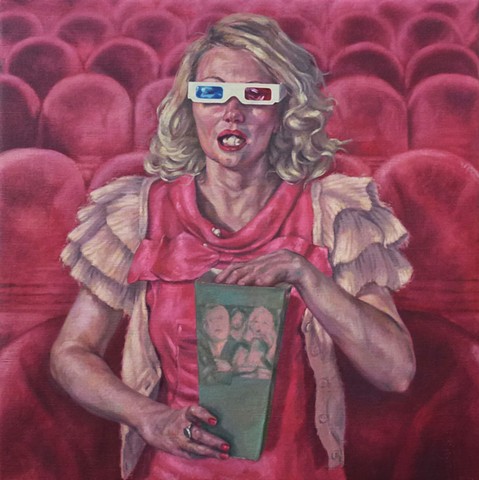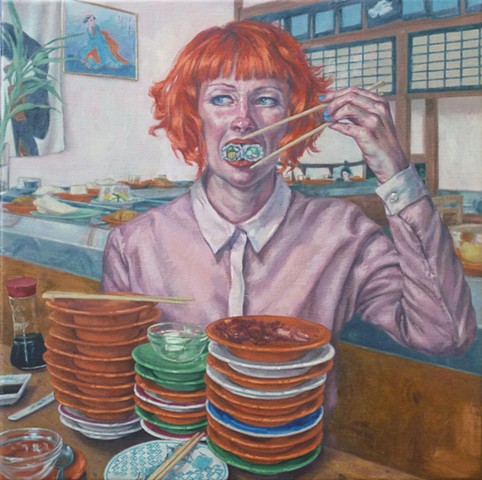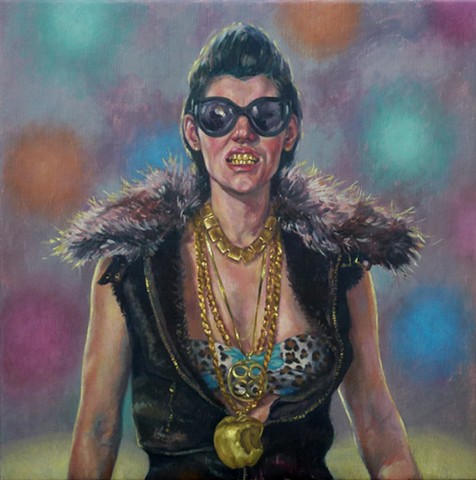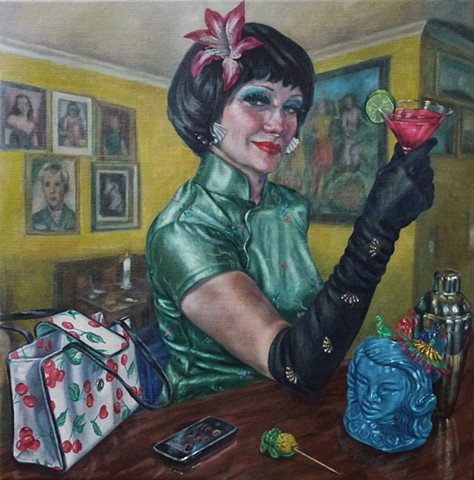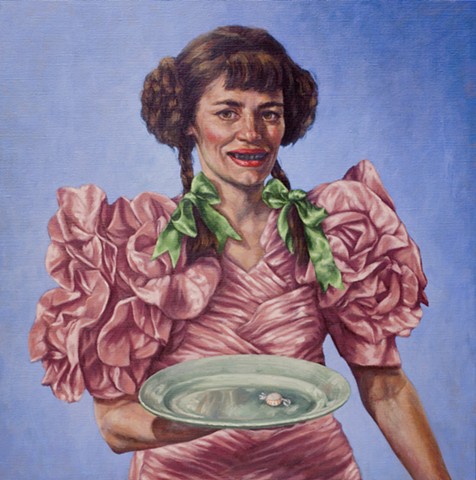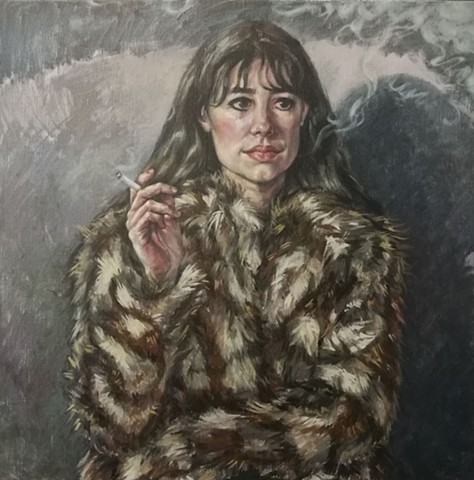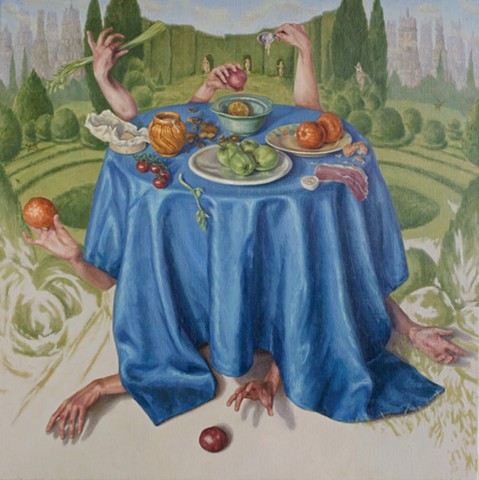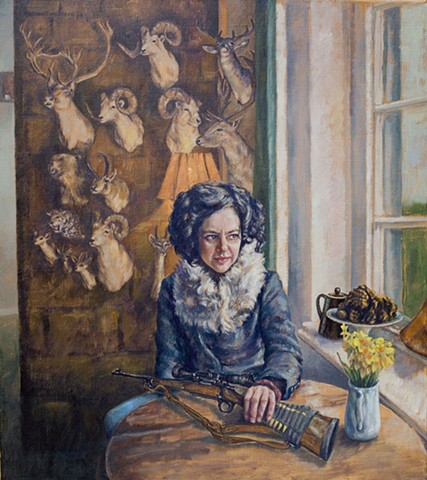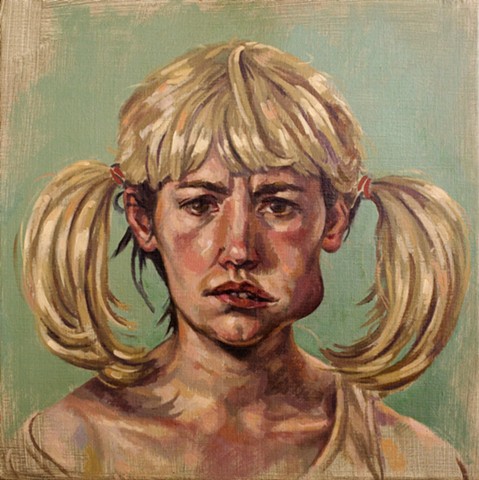APPETITE
Alongside her commitment to the painted image, Halls' work is characterised by curiosity for key cultural trends. Exposing where gender and class norms slyly intersect, the artist circumscribes a repertoire of legitimate actions available to the modern female. Today, seemingly endless proliferations of personae are available for adoption by women: yet the invisible boundaries of self censure and fear of 'inappropriateness' refute those possibilities. In Halls’ work, Foucauld's idea of a ‘surveillance society’ (with its internalised rules of conduct) is underpinned by a feminist confrontation of a contemporary culture that still appraises, influences and polices women's behaviour. This is evident, for example, in the nostalgic appropriation of the role of demure home baker, or the online admonishment of women eating in public places.
Halls’ Appetite works are a wry observation of the push and pull of modern society’s expectations. Leaving behind their unmanageable emotional excesses, the female subjects are freed from their overwhelming fears, open mouthed in anticipation of a feast. Oranges spill out from a woman’s shirt as it unbuttons itself; a beauty queen takes the first bite from her prize bouquet; arms snake out from under a tablecloth like an octopus or Indian god. These women have recovered from a paralysing state of longing.
Although ‘hysteria’ is no longer an acceptable diagnosis, the idea of female repression and its consequences is still relevant. ‘Hysteria’ has simply fragmented into a variety of modern ailments - from eating disorders to post-natal depression. The strange female body, with its dangerous sexuality and emotional tendencies is still seen as a thing to be kept under strict control- and naturally becomes rebellious. Halls’ protagonists respond to messages of Eat/Don’t Eat like simmering saucepans, or boiling kettles about to blow their covers. Caught in the act of mastication, these women forget social etiquette, advancing aggressively upon the edible.
Halls considers herself as an artist working within the feminist tradition, yet she does not force-feed us the moral of the story. Unlike Charcot’s medical specimens, Halls’ subjects are presented without judgement; they stare out defiantly and challenge us about our own self-imposed boundaries. You can try to suppress them, or keep them safely within their frames- but you should expect eruptions of indecorous behaviour verging on the absurd.
Melanie Duignan
